‘Throughout All Days And Nights, Forever’: Could An 11th-Century Contract Show Same-Sex Marriage In Medieval Spain?
AncientPages.com - In 1061, two men, Pedro Díaz and Munio Vandilaz, signed a legal agreement in which they undertook to share the management of the house and church of Santa María de Ordes – most likely the current parish of the same name in the Ourense municipality of Rairiz de Veiga, in Northwestern Spain.
Illustration of two same-sex couples kissing, taken from Codex Vindobonensis 2554. Österreichische Nationalbibliothek, Vienna.
Judging by their surnames, the men were not relatives but rather, as we will see, friends.
So far, nothing strange or exceptional.
An everyday document
It was also unremarkable that two laymen who were not family decided what to do with assets that, today, we would define as ecclesiastical. Churches and monasteries were often part of the assets of the wealthiest families, who were completely free to decide what to do with them. At this time, the Church also lacked the power or the ability to unilaterally manage all of its material goods.
The text that details the agreement in question is preserved in the cartulary of the monastery of El Salvador de Celanova, one of the most important historical archives of the Hispanic world in the High Middle Ages, with a particularly rich and interesting number of documents. It specifies that both men were equal owners of the church.
It goes on to list the functions they were to share, a fairly standard inventory of the various tasks and duties carried out in the monasteries of early medieval Europe: looking after guests; directing, feeding and clothing servants; cultivating the lands and orchard. Lastly, and perhaps in reference to the horizontal aspirations of monastic societies, it is specified that both men should have the same rights to food, drink and clothing.
‘Throughout all days and nights, forever’
This is the point where the document begins to stray from what might be considered usual. Less usual but not for that reason unusual, since this text still fits within what has come to be defined as artificial kinship, a legal construct that has been documented throughout much of the early medieval European world.
This structure allowed people who were not related to agree to consider one another siblings, in order to defend each other or share property. Shared ownership and management are present in the case of Pedro Díaz and Munio Vandilaz, but it also specifies that this is to be done as “good friends, full of faithfulness and truth, throughout all days and nights, forever”.
This emotional passage, which goes far beyond the simple needs of documenting an agreement, has led some historians to see this as more than just another example of artificial kinship.
The first to open up this avenue of research was the American medievalist John Boswell (1947-1994). In his work The Marriage of Likeness: Same Sex Unions in Pre-Modern Europe – which covered same-sex unions from classical antiquity to the Middle Ages – he chose this document as one of those which, according to his hypothesis, concealed a loving, marital union between two men.
Spanish legal historian Eduardo de Hinojosa, who lived between the second half of the 19th century and the beginning of the 20th century, had previously commented on this document as an example of artificial kinship. Hinojosa’s interpretation differed from Boswell’s, which is not surprising, since the academic and cultural standards of his time were not favourable for delving into a history of emotions, sex or homosexuality.
Difficult to define
Boswell’s interpretation has been followed up by other contemporary historians, notably the Galician philologist and historian Carlos Callón. In his work Amigos e sodomitas (Friends and Sodomites) this document forms a cornerstone of Callón’s argument regarding the existence of romantic relationships between people of the same sex which were consensual and publicly recognised during the Middle Ages.
Although the task of interpreting the original document is not easy, what is certain is that the Middle Ages are far from the dark, backwards and savage era that some continue to imagine. It is important to remember that in the the Middle Ages there was even homoerotic literature, a fact that reveals a certain permissive attitude and recognition of loving and sexual relations between people of the same sex.
This document may therefore be a factual, non-literary example of a recognised same-sex union during the Medieval period.
Provided by The Conversation
This article is republished from The Conversation under a Creative Commons license. Read the original article.
More From Ancient Pages
-
 Pharaoh Psusennes I Was Buried In The Silver Coffin Decorated With Gold
Featured Stories | Jan 25, 2021
Pharaoh Psusennes I Was Buried In The Silver Coffin Decorated With Gold
Featured Stories | Jan 25, 2021 -
 Amaru (Katari) – Powerful Inca God Who Controlled Weather Phenomena
Featured Stories | Apr 9, 2024
Amaru (Katari) – Powerful Inca God Who Controlled Weather Phenomena
Featured Stories | Apr 9, 2024 -
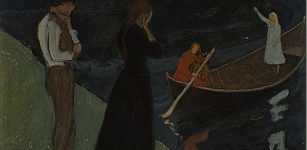 Tuonela – The Land Of The Dead In Beliefs Of Ancient Finnish People
Featured Stories | Nov 9, 2021
Tuonela – The Land Of The Dead In Beliefs Of Ancient Finnish People
Featured Stories | Nov 9, 2021 -
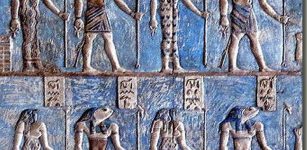 Number Eight Powerful Symbol In Ancient Traditions Of Many Cultures
Ancient Symbols | Dec 8, 2017
Number Eight Powerful Symbol In Ancient Traditions Of Many Cultures
Ancient Symbols | Dec 8, 2017 -
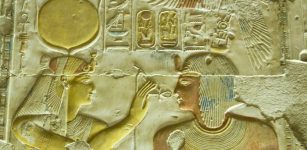 Hathor – One Of Ancient Egypt’s Greatest Female Deities
Egyptian Mythology | Jun 16, 2021
Hathor – One Of Ancient Egypt’s Greatest Female Deities
Egyptian Mythology | Jun 16, 2021 -
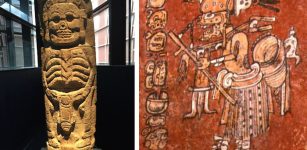 Ah Puch: Evil Death God Of Underworld Who Hated Souls In Maya Beliefs
Featured Stories | Feb 16, 2018
Ah Puch: Evil Death God Of Underworld Who Hated Souls In Maya Beliefs
Featured Stories | Feb 16, 2018 -
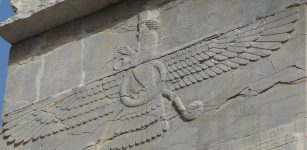 Winged Sun Disk: One Of The Oldest And Most Important Solar And Religious Symbols
Ancient Symbols | Mar 15, 2019
Winged Sun Disk: One Of The Oldest And Most Important Solar And Religious Symbols
Ancient Symbols | Mar 15, 2019 -
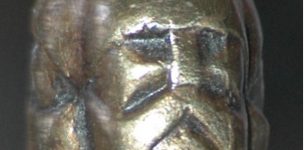 Triglav (Trzygłów) – Powerful Three-Headed Slavic God Of Vigilance, Sea Storms Who Supervised Sky, Earth, And Underworld
Featured Stories | Nov 11, 2019
Triglav (Trzygłów) – Powerful Three-Headed Slavic God Of Vigilance, Sea Storms Who Supervised Sky, Earth, And Underworld
Featured Stories | Nov 11, 2019 -
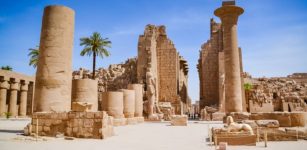 Gigantic Karnak Temple Complex: Advanced Ancient Technology In Egypt
Civilizations | Apr 6, 2017
Gigantic Karnak Temple Complex: Advanced Ancient Technology In Egypt
Civilizations | Apr 6, 2017 -
 Antediluvian Artifact Discovered In Egyptian Tomb May Solve The Great Pyramid Mystery?
Ancient Mysteries | May 3, 2018
Antediluvian Artifact Discovered In Egyptian Tomb May Solve The Great Pyramid Mystery?
Ancient Mysteries | May 3, 2018 -
 Oldest Door Lock Comes From Ancient Egypt
Ancient History Facts | Jun 27, 2018
Oldest Door Lock Comes From Ancient Egypt
Ancient History Facts | Jun 27, 2018 -
 Mystery Of The Giants’ Grave of Coddu Vecchiu
Featured Stories | Jun 27, 2015
Mystery Of The Giants’ Grave of Coddu Vecchiu
Featured Stories | Jun 27, 2015 -
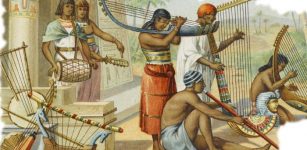 How Important Was Music In Ancient Egypt?
Ancient History Facts | Jan 16, 2021
How Important Was Music In Ancient Egypt?
Ancient History Facts | Jan 16, 2021 -
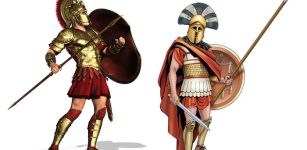 Who Were The Hoplites And What Was Their Armor Composed Of?
Ancient History Facts | Apr 20, 2018
Who Were The Hoplites And What Was Their Armor Composed Of?
Ancient History Facts | Apr 20, 2018 -
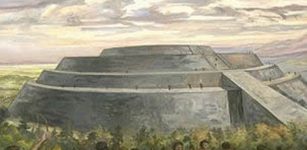 Cuicuilco Circular Pyramid: Ancient Astronomical Observatory And Place Of Power
Civilizations | Aug 24, 2021
Cuicuilco Circular Pyramid: Ancient Astronomical Observatory And Place Of Power
Civilizations | Aug 24, 2021 -
 Mayan Maize God And Ancient City Of El Mirador
Featured Stories | Apr 25, 2019
Mayan Maize God And Ancient City Of El Mirador
Featured Stories | Apr 25, 2019 -
 Heyoka – Sacred Clown Who By Doing The Opposite Helps And Guides In Daily Life
Native American Mythology | Feb 7, 2019
Heyoka – Sacred Clown Who By Doing The Opposite Helps And Guides In Daily Life
Native American Mythology | Feb 7, 2019 -
 Unique Temple Of The Condor In Machu Picchu: 3D Spectacular Inca Stonemasonry
Civilizations | Sep 21, 2016
Unique Temple Of The Condor In Machu Picchu: 3D Spectacular Inca Stonemasonry
Civilizations | Sep 21, 2016 -
 Izanagi and Izanami And World Creation In Shinto Cosmology
Featured Stories | Mar 28, 2019
Izanagi and Izanami And World Creation In Shinto Cosmology
Featured Stories | Mar 28, 2019 -
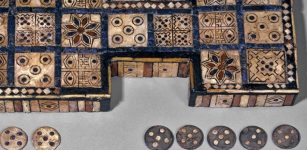 Royal Game Of Ur – One Of The Oldest Game Boards Discovered
Ancient History Facts | Feb 3, 2016
Royal Game Of Ur – One Of The Oldest Game Boards Discovered
Ancient History Facts | Feb 3, 2016

